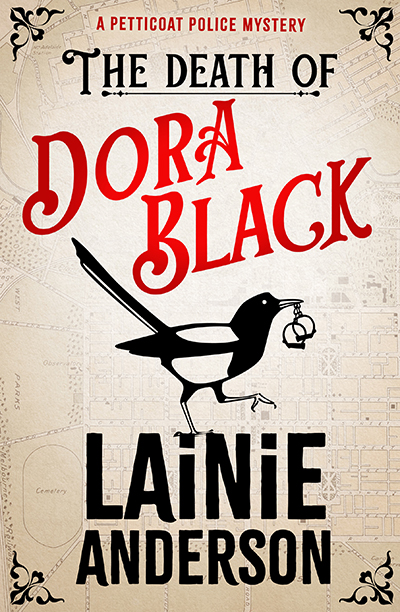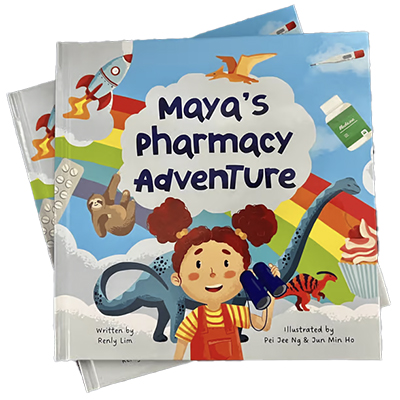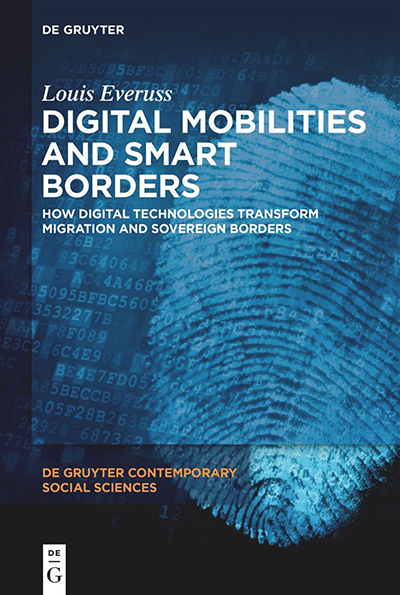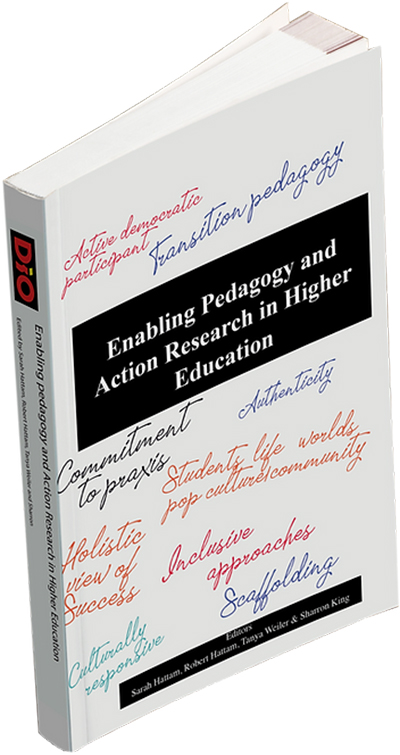The latest books from UniSA researchers
- The Death of Dora Black: A Petticoat Police Mystery
- Maya’s Pharmacy Adventure
- Digital Mobilities and Smart Borders: How Digital Technologies Transform Migration and Sovereign Borders
- Enabling pedagogy and Action Research for Higher Education in Australia
The Death of Dora Black: A Petticoat Police Mystery
By UniSA Creative Industry Adjunct Dr Lainie Anderson

The Death of Dora Black is the first instalment in Lainie Anderson’s A Petticoat Police Mystery series, inspired by the real-life achievements of Kate Cocks, a trailblazer in Australian history and the first policewoman in the British Empire employed on the same salary as a man. The murder mystery explores Adelaide in the summer of 1917, where Miss Kate Cocks and her junior constable Ethel Bromley, investigate the death of shop assistant Dora Black.
Set during World War I, the narrative shines a light on grieving mothers and wives, and demands for peace, patriotism and freedom. Kate Cocks and Ethel Bromley take investigative matters into their own hands, determined to uncover the sinister facts and keep Adelaide safe.
Lainie Anderson was named 2023 Emerging Historian of the year and wrote The Death of Dora Black as part of her PhD on the life of Kate Cocks. She sits on the executive committee of the History Council of South Australia and is a History Guardian for the History Trust of South Australia. Her dedication to Australian history reveals a thoughtful perspective of the Great War tucked within a charming murder mystery.
The Death of Dora Black: A Petticoat Police Mystery is available from Hachette Australia.
Maya’s Pharmacy Adventure
By UniSA Senior Research Fellow Dr Renly Lim, a member of the Quality Use of Medicines and Pharmacy Research Centre

Medicine misadventures can sometimes happen with children.
Luckily for Maya, her aunty Sophie, a pharmacist, always shares tips on how to care for her health and use medicines safely and effectively!
From rainbows to dinosaurs to marvels under the sea, what other wonders could there be?
Join Maya as she embarks on a pharmacy adventure with Aunty Sophie!
Royalties from the book will be donated to the FIP Foundation, a non-for-profit organisation supporting pharmacists and pharmaceutical scientists’ educational and research efforts globally.
Maya’s Pharmacy Adventure is available from Pharmacy Adventure.
Digital Mobilities and Smart Borders: How Digital Technologies Transform Migration and Sovereign Borders
By UniSA Research Associate Dr Louis Everuss

From smart gates and drone patrols to e-visas and mobile GPS apps, digital technologies are becoming a ubiquitous feature of state borders and travel. The embedding of digital technologies into bordering and travel processes is reshaping the ways people move around the world, as well as the means sovereign states use to control and facilitate that movement. Digital Mobilities studies these changes and examines how ‘digitisation’ is remaking the very fabric of state sovereignty, territory, and borders.
Some of the core bordering and travel transitions prompted by digitisation that are examined in Digital Mobilities and Smart Borders include the spatial and temporal reorganisation of borders; the algorithmic assessment of travellers as ‘data doubles’; the reformulation of border agency, or who or what performs the border; the digital augmentation of international travel; and the new tensions and conflicts arising between smart borders and digital mobilities. Understanding these transitions is essential for policy makers, advocates and members of the public to comprehend both the exceptional opportunities and monumental risks posed by the embedding of digital technologies into borders and travel.
Digital Mobilities and Smart Borders: How Digital Technologies Transform Migration and Sovereign Borders is available from De Gruyter.
UniSA staff and students can access the books for free via this link courtesy of the UniSA Library.
Enabling pedagogy and Action Research for Higher Education in Australia
Edited by Dr Sarah Hattam, Professor Robert Hattam, Tanya Weiler and Professor Sharron King. All the chapters were authored by academics from UniSA College

Enabling pedagogy and action research for higher education in Australia is “an essential book that enables readers to understand the imperative of Enabling pedagogies for higher education transformation”, according to the director of the Centre of Excellence for Equity in Higher Education at the University of Newcastle, Professor Penny Jane Burke.
Our book shares how educators in one of Australia’s largest enabling programs collectively engaged in action research projects to confront deficit views and instead create positive change leading to student success, satisfaction and experience. It has long been argued that traditional higher education pedagogy sees students as empty vessels, in need of filling up (Freire 1974). It positions students as deficit, lacking in the required skills, abilities and capitals to succeed at university. This historic position of the ‘good student’ has shaped university teaching and is outdated, damaging and does not serve modern cohorts represented in contemporary universities. By enacting critical enabling pedagogy, we fostered a teaching space where learners are valued for their individual strengths and knowledges.
Each chapter explores a teaching challenge with a hopeful idea for change, providing powerful insights into what educators learned about their practice, their students and themselves. Using action research, each chapter showcases how this can be effectively implemented as a tool to not only enhance teaching and student outcomes, but to work as a collegial act of resistance to counter the neoliberal agenda which dominates higher education. Our book unveils the potential to revolutionise teaching in higher education and is a resource for anyone committed to student equity, inclusion and delivering student-focused teaching.
Enabling pedagogy and Action Research for Higher Education in Australia is available from DIO Press.
UniSA staff and students can access the books for free via this link courtesy of the UniSA Library.
Other Stories
- New lunar distress system could safeguard future astronauts
- When a child hurts, validating their pain may be the best first aid
- Is chocolate milk a good recovery drink after a workout? A dietitian reviews the evidence
- When First Nations students exchange culture with First Nations peoples abroad: ‘Life-changing’
- From the Vice Chancellor: Balancing rights and responsibilities
- Achievements and Announcements
- Ageing fabulously: 3MT on a winner for the LGBTI+ older community
- UniSA international students win prized internships with Adelaide Football Club
- In Pictures: September graduation ceremonies
- The latest books from UniSA researchers




